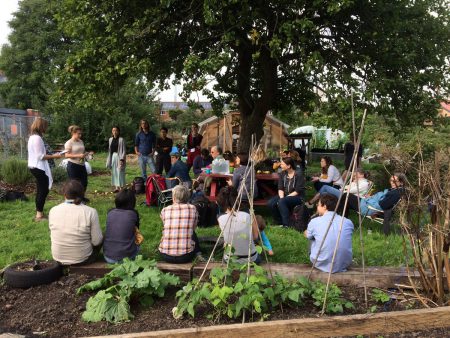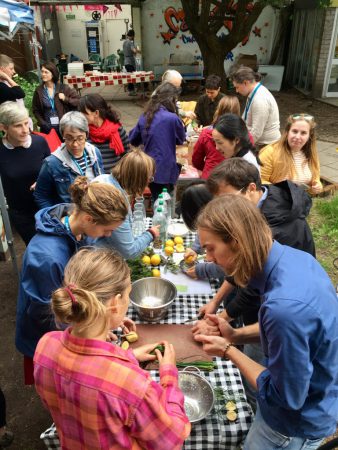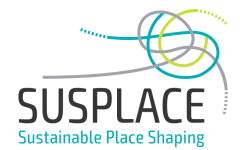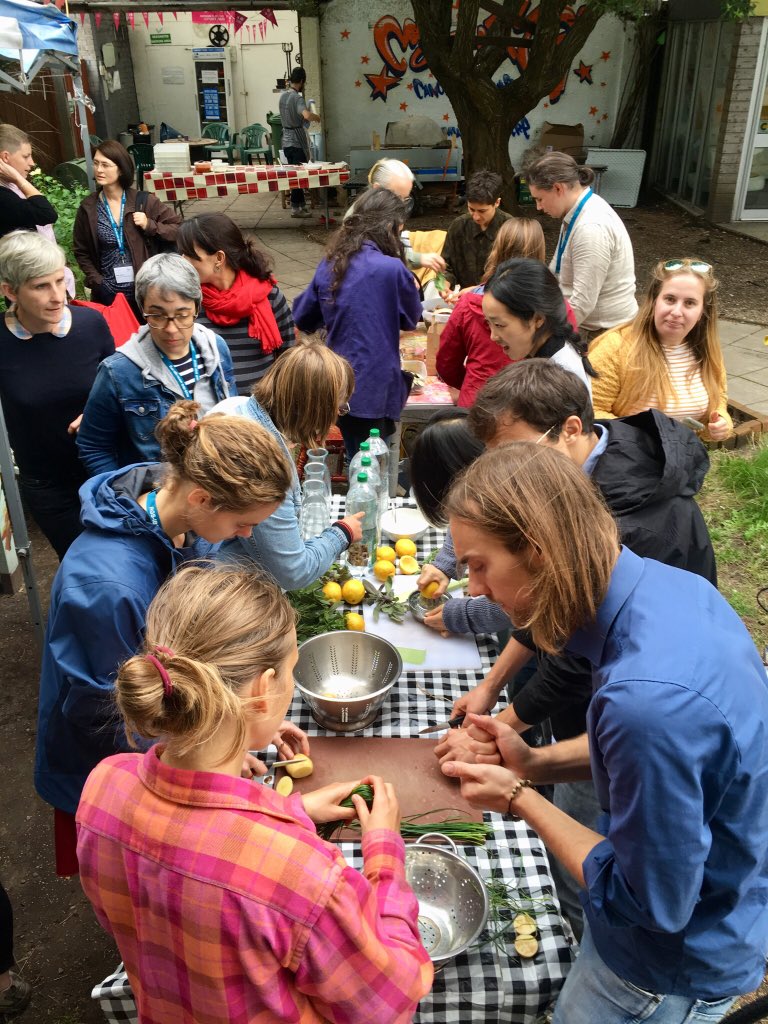
This year marked the return of the annual Royal Geographical Society (RGS) to Wales for the first time in 25 years, hosted by our Geography and Planning department at Cardiff University. It is possibly the largest Geography conference in the UK, attracting more than 1700 researchers and practitioners and at times running more than 30 parallel sessions in a single two-hour time slot with typically between four and six papers presented in each session! Several academic journals and research groups use this conference as an opportunity to hold their annual meetings and events – needless to say, we were spoiled for choice at almost every moment of the day. Many of my colleagues at PLACE were actively involved in the conference. Despite only having arrived this month to Cardiff, I was lucky enough to participate in the conference through volunteering in a food sustainability workshop and presenting as part of a panel discussion on sustainable place-shaping which centred on the SUSPLACE ESR’s research projects here at Cardiff.
For me, the conference started one day early with a workshop day hosted by the RGS Food Geographies group (@FoodGeog) on Tuesday 28th. This was a dynamic day of activities based on the title “Planning Change in the City: Food Futures”. We started by hearing a panel of academics and local practitioners in food sustainability as they each posed their challenges and questions for the future of local food sustainability. We then all broke out into groups, focusing each on discussing a different set of questions which had been drawn from participants registration questionnaires. On my table we spoke about the use of art in food activism and awareness, the issues with certification schemes in food sustainability, and positionality of the researcher and how to work in solidarity with different groups.
 After lunch, the workshop participants took a walk through Bute Park with a guided tour of different examples of local food initiatives before being met by myself and the community garden organisers at Global Gardens. We set them straight to work on different tasks in the garden whilst encouraging participants to take a mindful walk around the garden and write their reflections on the concept of ‘Gardens of Sanctuary’. Doing the best I could with my fairly limited knowledge, I led a group on picking mushrooms, hacking back brambles and digging a new plant be. I was lucky enough to have in my group a young researcher carrying out really similar research on community gardens and higher education – a great opportunity for discussion and networking! There was a moment in which I glanced around the garden and what I saw really made me smile and appreciate the myriad ways in which people learn and connect with their environment and each other: some participants were hard at work discussing how to identify weeds or how to know when to harvest produce; others sitting down on logs or benches to discuss their research with each other; and a few participants looking contemplative yet peaceful as they wandered around the garden mindfully. Finally, we finished the day by taking the produce we had harvested to a local community cafe, Embassy café, to make pizzas in their outdoor pizza oven. It was a really well-organised day that broke away from the traditional structure of conference workshops and allowed more time for research community building as well as engaging with local food sustainability in practice.
After lunch, the workshop participants took a walk through Bute Park with a guided tour of different examples of local food initiatives before being met by myself and the community garden organisers at Global Gardens. We set them straight to work on different tasks in the garden whilst encouraging participants to take a mindful walk around the garden and write their reflections on the concept of ‘Gardens of Sanctuary’. Doing the best I could with my fairly limited knowledge, I led a group on picking mushrooms, hacking back brambles and digging a new plant be. I was lucky enough to have in my group a young researcher carrying out really similar research on community gardens and higher education – a great opportunity for discussion and networking! There was a moment in which I glanced around the garden and what I saw really made me smile and appreciate the myriad ways in which people learn and connect with their environment and each other: some participants were hard at work discussing how to identify weeds or how to know when to harvest produce; others sitting down on logs or benches to discuss their research with each other; and a few participants looking contemplative yet peaceful as they wandered around the garden mindfully. Finally, we finished the day by taking the produce we had harvested to a local community cafe, Embassy café, to make pizzas in their outdoor pizza oven. It was a really well-organised day that broke away from the traditional structure of conference workshops and allowed more time for research community building as well as engaging with local food sustainability in practice.
 The following day, with the start of the full conference programme we prepare for our panel discussion on sustainable place-shaping. Organised by Abid Mehmood and chaired by Terry Marsden, the panel included the three Cardiff ESRs (myself, Lorena and Cátia), Matthew Quinn from PLACE representing the role of policy, and Richard Tyler from the Brecon Beacons National Park speaking about place-shaping initiatives in practice. With few technical difficulties to overcome, Lorena managed to give an excellent presentation through skype on her place-shaping work with young people in Cardiff. She offered great contributions to the consequent panel discussion despite only being able to hear through Cátia’s phone and not being able to see anyone. I presented on my current research proposal and plan for the project and Cátia spoke about her work on sustainable place-branding in rural Portugal as well as discussing her current project with Richard at the Brecon Beacons. It was a great session all round with an interesting discussion afterwards about the challenges of encouraging more interdisciplinary collaboration and reflecting on which groups of people tend to get involved in public forums for place-shaping.
The following day, with the start of the full conference programme we prepare for our panel discussion on sustainable place-shaping. Organised by Abid Mehmood and chaired by Terry Marsden, the panel included the three Cardiff ESRs (myself, Lorena and Cátia), Matthew Quinn from PLACE representing the role of policy, and Richard Tyler from the Brecon Beacons National Park speaking about place-shaping initiatives in practice. With few technical difficulties to overcome, Lorena managed to give an excellent presentation through skype on her place-shaping work with young people in Cardiff. She offered great contributions to the consequent panel discussion despite only being able to hear through Cátia’s phone and not being able to see anyone. I presented on my current research proposal and plan for the project and Cátia spoke about her work on sustainable place-branding in rural Portugal as well as discussing her current project with Richard at the Brecon Beacons. It was a great session all round with an interesting discussion afterwards about the challenges of encouraging more interdisciplinary collaboration and reflecting on which groups of people tend to get involved in public forums for place-shaping.
The rest of the conference was non-stop. I attended a broad range of talks (though still a drop in the ocean with respect to the full conference programme): from geographies of trauma and hierarchies in research ethics, to masculine identities in vegetarianism and post-brexit food policies. Luckily there were several opportunities for breaks and socialising with Terry Marsden launching his SAGE book series on Nature and other drinks receptions and book launches each day. On the final day I decided to take a morning session off to visit one of the community gardens participating in my research and catch up with the community gardeners whilst watering plants and eating some fantastic apples – a great (albeit rather exhausting) week!

